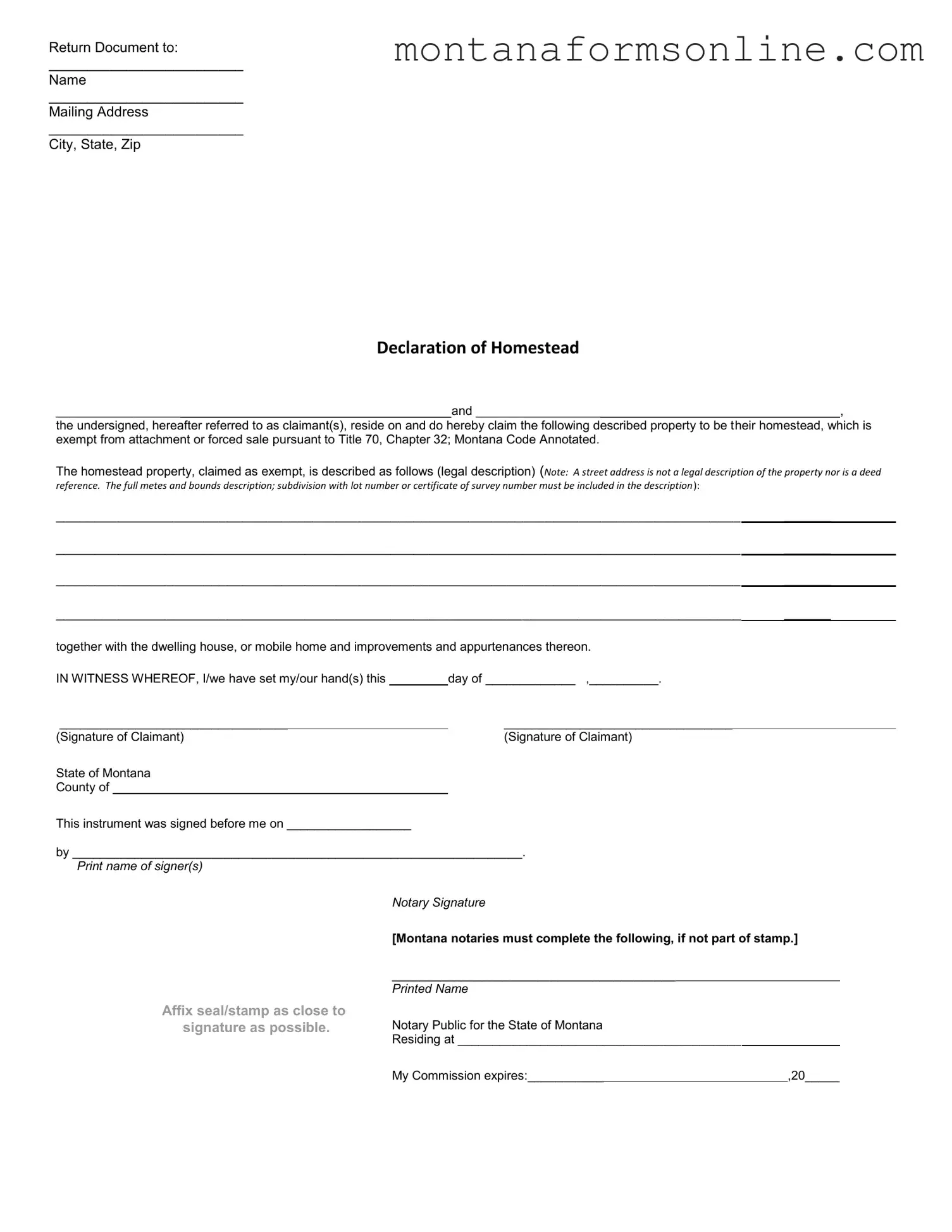
Return Document to:
_________________________
Name
_________________________
Mailing Address
_________________________
City, State, Zip
DECLARATION OF HOMESTEAD
__________________and __________________,
the undersigned, hereafter referred to as claimant(s), reside on and do hereby claim the following described property to be their homestead, which is exempt from attachment or forced sale pursuant to Title 70, Chapter 32; Montana Code Annotated.
The homestead property, claimed as exempt, is described as follows (legal description) (Note: A street address is not a legal description of the property nor is a deed
reference. The full metes and bounds description; subdivision with lot number or certificate of survey number must be included in the description):
________________________________________________________________________________________ |
______ |
________________________________________________________________________________________ |
______ |
________________________________________________________________________________________ |
______ |
________________________________________________________________________________________ |
______ |
together with the dwelling house, or mobile home and improvements and appurtenances thereon.
|
|
|
|
|
|
IN WITNESS WHEREOF, I/we have set my/our hand(s) this |
|
day of _____________ ,__________. |
_________________________________ |
|
|
_________________________________ |
(Signature of Claimant) |
|
|
(Signature of Claimant) |
|
State of Montana |
|
|
|
County of |
|
|
|
|
This instrument was signed before me on __________________
by _________________________________________________________________.
Print name of signer(s)
Affix seal/stamp as close to signature as possible.
Notary Signature
[Montana notaries must complete the following, if not part of stamp.]
_________________________________________
Printed Name
Notary Public for the State of Montana
Residing at _________________________________________
My Commission expires:___________ |
|
,20_____ |

